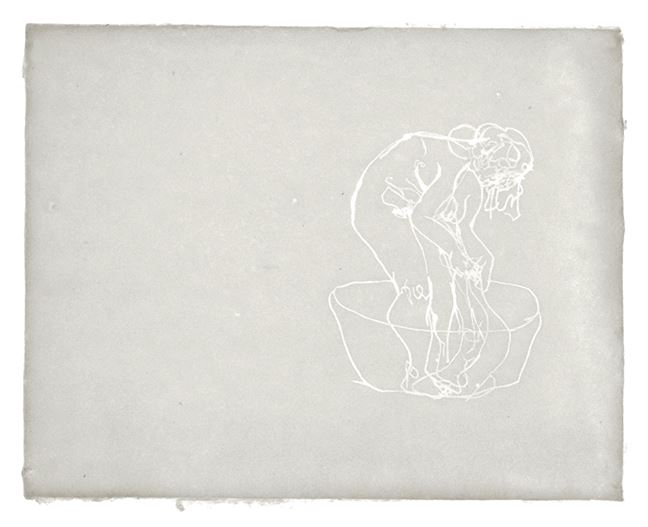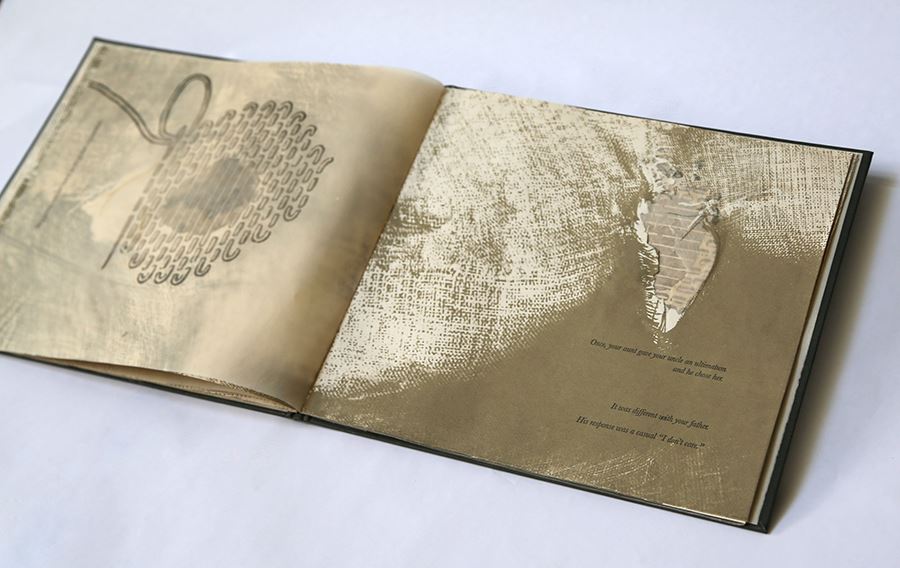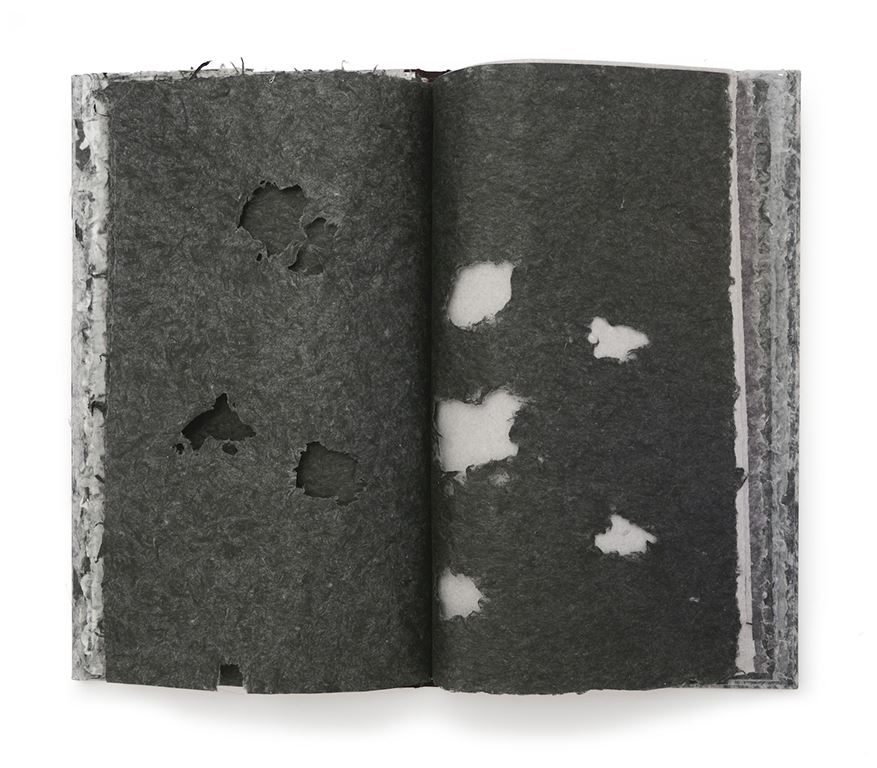An interdisciplinary mindset is arguably necessary in the art world today. As either a cause or a consequence of this, an increasing number of programs in academia are encouraging cross-pollination, particularly within the arts, but also across adjacent fields of study. Even when programs are less interdisciplinary, a greater number of students seem to be finding value in expanding their abilities by taking more diverse electives on their own. The job market has had a dramatic impact on this shift as well, as more jobs in all career paths are requiring employees to perform a wider variety of tasks.
I find this migration toward an interdisciplinary mindset extremely exciting for book art in particular because books are such perfect conduits for other mediums. By expanding the assumptions of how an artist book is produced and what an artist book is, we can make room for processes and materials to become additional avenues of meaning within the works.
While there are many examples of this being done with all mediums, I have a particular interest in cases where paper becomes a conceptual support for the artist book. Paper feels a little taken for granted in artist books. While it is a consideration when producing a project, the reasons for choosing a paper type are almost always based around the printing or binding structure of the book. This is a valid and excellent way of deciding what paper to use, but I find myself more excited when I see artist books that pass a paper version of the Bechdel test: the paper brings its own value to the book other than being a carrier for the printing.

William Kentridge. Sheets of Evidence, 2009.
One of the more universally recognized ways paper is used to enhance the experience of artist books is by incorporating papermaking techniques in the image making process. Dieu Donné is a non-profit that focuses on creating fine art works using hand papermaking techniques. Over their 40+ years, they have produced many incredible artist book editions that bridge the worlds of papermaking and book art. William Kentridge’s work titled Sheets of Evidence looks like a blank book until the viewer flips the page and the light reveals the watermarked drawings hidden within the sheets. In this way, the papermaking process itself has acted as the conceptual lens to view the artwork through.

Sue Carrie Drummond. A Darning Stitch, 2017.
Women’s Studio Workshop is another notable source for beautiful works intersecting papermaking and book art. The best example that comes to mind being Sue Carrie Drummond’s book A Darning Stitch. In this book, the use of the blow-out technique allows the viewer’s sense of touch to inform the way they are thinking about the work conceptually. The abaca begins to feel like skin, especially where it is only revealed surrounded by cotton.

Robbin Ami Silverberg. Haiku de Nuit, 2015. Image by Dorka Hubner.
Robbin Ami Silverberg’s book titled Haiku de Nuit is one of my favorite examples of handmade paper heightening one’s experience through paper alone. The book includes a poem by Carole Naggar about her mother; while the poem sets the stage for the work, the paper itself gives incredible weight to the piece—the inclusion of hair within some pages and the removal of fibers from others creates the feeling of absence mirroring the poem.

Kyle Holland. Hunted, 2018.
Paper fibers can provide such a unique quality to all senses when interacting with artist books, giving even more support to the case for heightened consideration. Kyle Holland’s work often has hidden layers of meaning within the materials and processes used and his artist book Hunted is no exception. The cotton blow-outs are couched onto abaca paper and as the viewer turns the pages, the sound of the abaca becomes the rustling of leaves in the forest.

Cynthia Nourse Thompson. Grievous Injuries, 2010.
Added meaning can come through in the materiality of the works as well. The paper in Cynthia Nourse Thompson’s girdle book titled Grievous Injuries is made from unblessed purificators and corporals. While the importance of the fiber is not obvious from just looking at the artist book, the piece is still imbued with the history and significance of the material while acting as a kind of Easter egg for the viewers that spend the time reading about how the book was made.
Beth Sheehan is an artist living in Tuscaloosa, Alabama. Her work investigates memory and perception to explore her lack of episodic memory. Sheehan’s work has been exhibited internationally and is held in 37 public collections. She has worked as a professional printer and bookbinder and currently workshops around the country.

